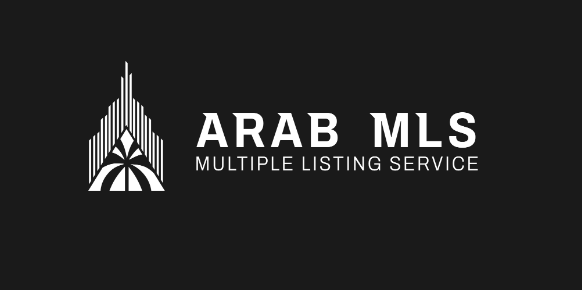In the evolving landscape of real estate technology, data access and delivery are paramount. Multiple Listing Service (MLS) systems, the backbone of real estate data in North America, have traditionally relied on RESTful APIs for data integration. However, with the rise of GraphQL, developers and brokers are rethinking how they query and consume property data. This article explores the pros and cons of GraphQL and REST in the context of MLS queries, helping industry professionals decide which approach best suits their needs.
Understanding REST and GraphQL
REST (Representational State Transfer)
REST is a mature, widely adopted architectural style that organizes interactions around resources, using standard HTTP methods (GET, POST, PUT, DELETE). In a RESTful MLS API, endpoints might look like:
Each endpoint returns a fixed structure of data, often resulting in over-fetching (too much data) or under-fetching (not enough data).
GraphQL
GraphQL, developed by Facebook in 2012, allows clients to specify exactly what data they need. Instead of multiple endpoints, there is typically a single /graphql endpoint where clients post structured queries. For example:
This flexibility eliminates the over/under-fetching problem and streamlines data handling.
Comparing GraphQL and REST for MLS Use Cases
Data Flexibility and Efficiency
REST:
In REST APIs, MLS queries often require multiple calls to gather full listing data. For instance, fetching a property and its agent details might involve two or more separate requests. Moreover, clients receive entire payloads, even when they need only part of the data.
GraphQL:
With GraphQL, a single query can retrieve exactly the fields needed from multiple related entities (listings, agents, photos, etc.). This reduces bandwidth and improves performance, especially important in mobile apps where efficiency is critical.
Winner: GraphQL — Offers fine-grained data selection and minimizes network requests.
Development Complexity
REST:
REST’s simplicity makes it easy to implement and understand, especially for smaller teams or when working with standardized data. Documentation tools like Swagger and Postman also streamline onboarding and testing.
GraphQL:
While GraphQL introduces a learning curve, its self-documenting nature (via introspection and tools like GraphiQL or Apollo Studio) eventually makes development more productive. However, building a robust GraphQL server — especially with deep nested relationships like MLS data — can be complex.
Winner: Tie — REST is simpler to start with; GraphQL is more powerful but needs more setup.
Performance and Scalability
REST:
REST APIs can be optimized with caching, pagination, and resource-specific endpoints. But clients often over-fetch data, causing performance issues on large MLS databases.
GraphQL:
GraphQL allows clients to avoid over-fetching, but it can introduce challenges on the server side, like expensive nested queries or N+1 problems. Tools like DataLoader or query complexity analysis are necessary to maintain performance.
Winner: Context-dependent — GraphQL is efficient on the client side; REST can be more predictable on the server.
Versioning and API Evolution
REST:
REST APIs usually require versioning (e.g., /v1/listings, /v2/listings) when the schema changes, which can be disruptive for clients.
GraphQL:
GraphQL eliminates the need for versioning. Since clients specify their own queries, the API can evolve without breaking changes, making it ideal for fast-moving real estate platforms.
Winner: GraphQL — More resilient to schema changes and easier to evolve.
Security and Access Control
REST:
REST uses standard HTTP methods and status codes, making it easy to integrate with existing security tools like firewalls, API gateways, and role-based access.
GraphQL:
GraphQL’s flexibility also introduces risk. Without careful authorization checks, clients may access unauthorized fields. Field-level permissions and query whitelisting are essential to mitigate these risks in MLS applications.
Winner: REST — Simpler to secure out-of-the-box, though GraphQL can match it with the right controls.
MLS Data Complexity
MLS data is inherently relational — listings relate to agents, offices, amenities, media, open house schedules, and more. REST’s rigid resource model makes managing these relationships cumbersome. For example, joining listings with school data or sold history typically requires custom endpoints or client-side stitching.
GraphQL, by contrast, naturally represents relationships and nested structures, enabling cleaner and more intuitive queries.
Winner: GraphQL — Handles complex data relationships more gracefully.
Real-World Use Cases
When to Use REST:
-
You’re integrating with existing systems or third-party vendors still using REST.
-
Your use case is simple and doesn’t require deep joins or nested data.
-
You need tight control over performance and security at the endpoint level.
When to Use GraphQL:
-
You’re building modern client applications (e.g., mobile or SPAs) needing dynamic data.
-
Your platform evolves frequently, and you want to avoid API versioning.
-
You need fine-tuned control over nested, complex MLS relationships.
Conclusion
Both REST and GraphQL have their place in the MLS ecosystem. REST is well-suited for straightforward, stable integrations, offering simplicity and predictability. GraphQL shines in dynamic, client-driven environments where performance and flexibility are key.
For modern MLS platforms aiming to empower real estate agents, brokers, and end-users with real-time, customizable data, GraphQL offers a compelling advantage — if implemented thoughtfully. Ultimately, a hybrid approach may work best: using REST for basic data access and GraphQL for complex or user-facing queries.
Frequently Asked Questions
What are the security challenges of using GraphQL for MLS data, and how can they be mitigated?
GraphQL’s flexibility can introduce several security risks:
-
Overexposure: Without restrictions, clients can query deep nested data, possibly accessing unauthorized fields.
-
Denial of Service (DoS): Complex nested queries can overload the server.
-
Introspection Exposure: By default, introspection can reveal the entire schema, which might expose sensitive fields.
Mitigation strategies include:
-
Field-level Authorization: Ensure each field has proper access checks based on user roles.
-
Query Depth Limiting: Set maximum query depth to prevent deeply nested queries.
-
Rate Limiting and Throttling: Prevent abuse by limiting request frequency per user or API key.
-
Disable Introspection in Production: If not needed, disable schema introspection to limit exposure.
For MLS data — which is often proprietary and regulated — these practices are crucial to maintaining compliance and data integrity.
When should an MLS provider choose REST over GraphQL?
An MLS provider should choose REST when:
-
Existing Infrastructure: The current system is already built around REST and doesn’t require complex data fetching.
-
Simple Use Cases: Endpoints are primarily used for flat, resource-based queries (e.g., list all agents).
-
Third-Party Compatibility: External partners or vendors integrate using standard REST clients.
-
Security Simplicity: REST’s straightforward endpoint-level access control is easier to manage in some environments.
-
Caching Needs: REST integrates more easily with HTTP caching and CDNs.
GraphQL is more powerful, but if the use case is straightforward and stability is key, REST remains a valid and robust choice.
Can GraphQL and REST be used together in an MLS system? How would that architecture look?
Yes, a hybrid architecture is often the most practical solution. Here’s how:
-
REST:
-
Used for authentication, media (e.g., property images), and other fixed resources.
-
Handles simple endpoints like
/regions,/offices, etc. -
Easy to cache and integrate with legacy systems.
-
-
GraphQL:
-
Used for flexible data fetching and user-facing applications (e.g., advanced search on front-end apps).
-
Ideal for queries that combine listings, agents, office, and showing data in one call.
-
Powers mobile apps or dashboards that benefit from dynamic querying.
-
What are the main performance concerns when using GraphQL with large MLS datasets, and how can they be addressed?
Concerns:
-
N+1 query problem: Fetching related data (e.g., agent info for each listing) can result in multiple database hits.
-
Expensive Nested Queries: Deep queries can increase server load.
-
Large Responses: Clients might request too much data at once.
Solutions:
-
Use DataLoader: Batches and caches requests to avoid redundant DB hits.
-
Limit Query Depth and Complexity: Prevent abuse with server-side rules.
-
Implement Caching: Use tools like Apollo’s cache or custom caching strategies for frequently accessed data.
-
Pagination & Field Whitelisting: Restrict payload size and sensitive fields.
Proper performance tuning is essential for production-grade GraphQL APIs, especially when querying large, relational MLS datasets.













